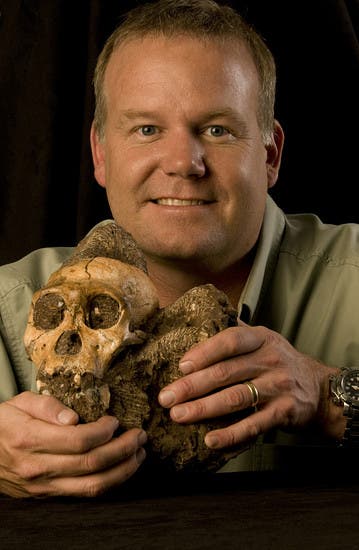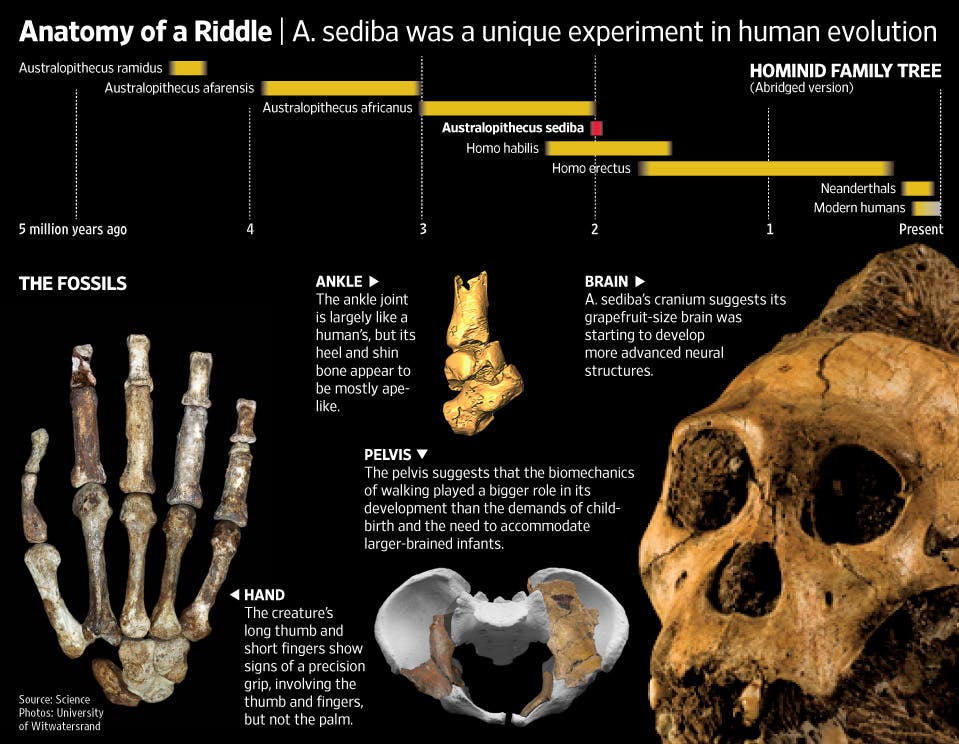Paleontologists in South Africa have reported finding an extraordinary number of fossils of a species that predated humans, belonging to the prehuman species Australopithecus Sediba that lived almost 2 million years ago.

The species had human-like hands and ape-like feet; it was found in a rearkable collection of fossils which includes the most complete early human hand found so far, and it can shed some light on an era of evolution which hasn’t been documented that much, due to the lack of specimens to analyze.
From head to toe, the species screams ‘part of missing link’. Scientists found an unexpected patchwork of primitive and advanced traits: tiny skulls, long arms and diminutive bodies, all unevolved features, while on the other hand the hands, ankles and pelvis are surprisingly modern.
They had a brain about as big as a grapefruit, and a model based on a 3D X-Ray scan of the fossilized cranium suggested that it was in the stage of becoming more and more advanced, displaying what can be interpreted as the first glimpse of complex intelectual activities.
“It’s as if evolution is caught in one vital moment, a stop-action snapshot of evolution in action,” said paleoanthropologist Richard Potts, director of the Smithsonian Institution’s Human Origins Program, who wasn’t involved in the discoveries.

Currently, a team of no less than 80 researchers is working on the matter, led by Lee Berger of the University of the Witwatersrand in Johannesburg.
“They do represent a model that could lead to the genus Homo,” Dr. Berger said.
However, the matter is not without controversy (as always, in this type of case).
“Just because it shares a bit of anatomical morphology with Homo does not mean it is Homo or ancestral to Homo,” said anthropologist Bernard Wood at George Washington University. “It looks increasingly that these bits of morphology are appearing more than once, independently, in the tree of life.”
Even so, regardless of their part in the tree of life, the bones are extremely valuable.
“This is an incredible trove for anything that early in time,” said anthropologist Ian Tattersal, at the American Museum of Natural History, in New York.
So far, they have discovered 220 bones from skeletons of five individuals, including infant, juvenile and adult remains representing both sexes, dating 1.977 million years old, based on uranium decay analysis. The findings also point out that evolution is much more convoluted than we usually believe it to be – especially thank to the pelvis, which is “the most human-like” ever discovered among a prehuman species, according to Dr. Berger.
“This hand is wonderful. The foot is fine. And the pelvis is spectacular,” said anthropologist Philip Rightmire at Harvard University’s Peabody Museum. “Evolution is more convoluted than we thought.”






